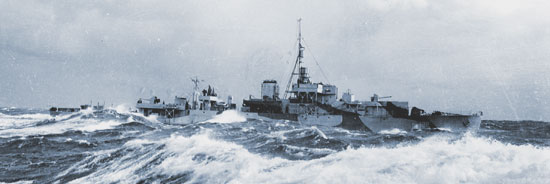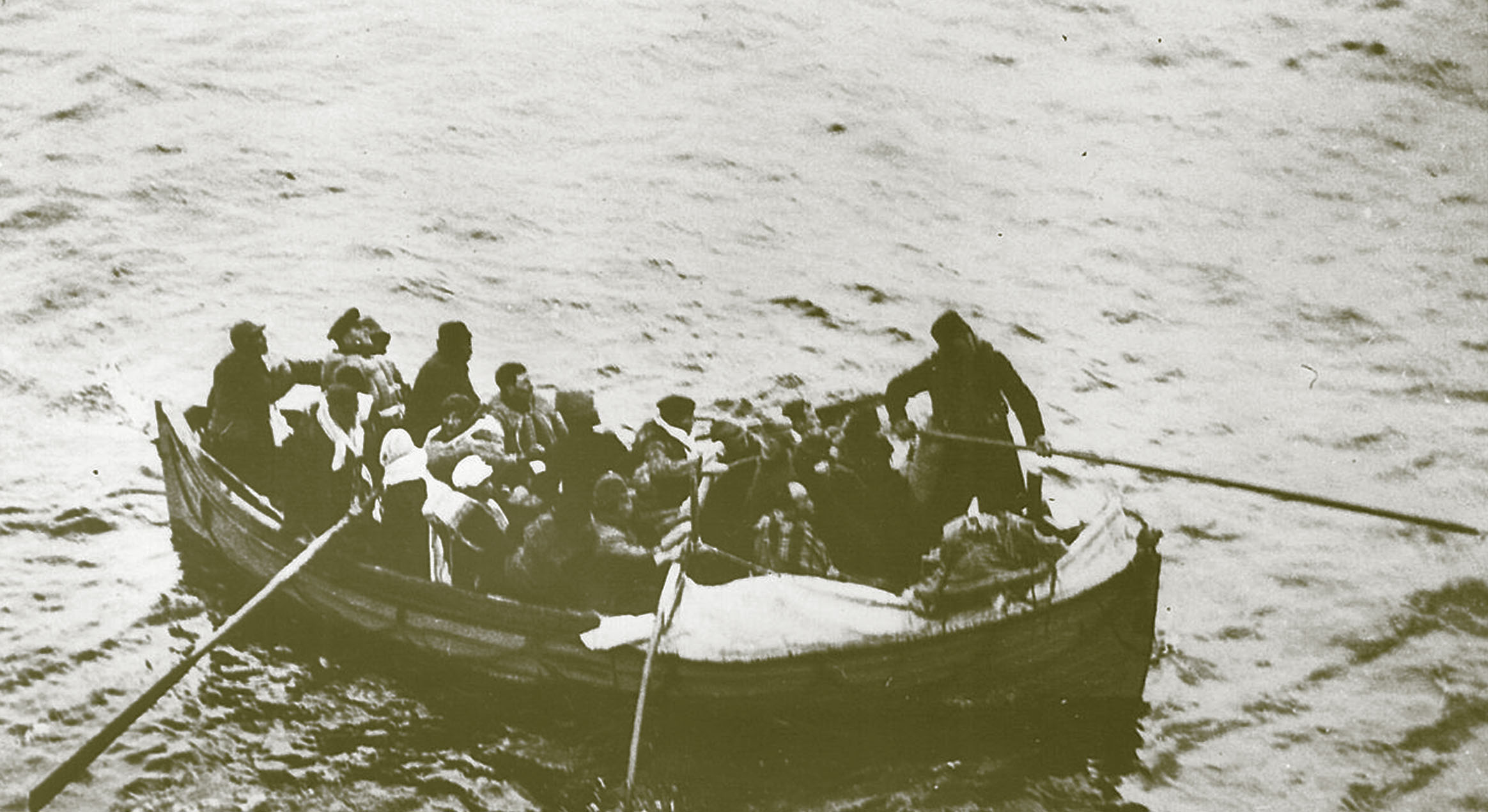The Battle of the Atlantic
This publication is available upon request in alternate formats.
PDF Version
The Battle of the Atlantic was the longest continuous battle of the Second World War and one in which Canada played a central role. The battle began on the opening day of the war in September 1939 and ended almost six years later with Germany’s surrender in May 1945.
The Battle of the Atlantic
The Battle of the Atlantic was the struggle between the Allied and German forces for control of the Atlantic Ocean. The Allies needed to keep the vital flow of men and supplies going between North America and Europe, where they could be used in the fighting, while the Germans wanted to cut these supply lines. To do this, German submarines, called U-boats, and other warships prowled the Atlantic Ocean sinking Allied transport ships.
The Battle of the Atlantic brought the war to Canada’s doorstep, with U-boats torpedoing ships within sight of Canada’s East Coast and even in the St. Lawrence River. Canada’s Merchant Navy, along with the Royal Canadian Navy (RCN) and the Royal Canadian Air Force (RCAF), played a key role in the Allied efforts. East Coast cities soon found themselves involved in the battle, since Allied convoys (groups of ships that crossed the Atlantic together under the protection of naval escorts) were frequently leaving busy ports like Halifax and Sydney, Nova Scotia, and St. John’s, Newfoundland, during the war.
Challenges and Successes
Early in the war, German U-boats took a heavy toll on merchant shipping as the Allies struggled to find effective ways to combat the enemy threat. Between 1939 and 1942, the Germans increased the number of U-boats from 30 to 300 and developed effective hunting techniques like using groups of submarines, called wolfpacks, to attack convoys. Their efforts initially paid off, with 454,000 tonnes of shipping being lost to German U-boats in June 1941 alone. Their successes continued as nearly 400 Allied ships were sunk between January and July 1942, while only seven U-boats were lost. The situation was very serious for the Allies, as merchant ships were being sunk faster than they could be replaced, thereby putting the supply link between North America and Europe at great risk.
Technology played an important role in the Battle of the Atlantic. Aircraft were effective in protecting merchant ships, but the Allied planes used earlier in the war did not have enough range to offer air cover for the convoys all the way across the Atlantic. Indeed, the central area of the ocean beyond aircraft range became known as the “Black Pit” as that was where many of the heaviest convoy losses occurred. However, the introduction of new long-range planes helped reduce the hazards of this dangerous portion of the run.
Both sides kept trying to get the upper hand in technology and tactics during the Battle of the Atlantic. Germany developed torpedoes that were attracted to the noise made by a ship’s propellers. Allied scientists responded by inventing a noise-making device that was towed behind a ship to divert the torpedoes. New radar and sonar (ASDIC) technologies helped the Allies find the U-boats and new weapons, like the “Hedgehog” bombs, helped sink the submarines more effectively. The Germans also developed technological advancements like snorkel tubes that allowed U-boats to run their diesel engines while travelling underwater and on-board radar that increased their submarines’ capabilities. Eventually, the improved equipment and tactics of the Allies finally helped turn the tide of the battle in their favour, with the U-boat fleet suffering heavy losses during the later phases of the war.
The growth of Canada’s navy was remarkable. At the beginning of the Second World War, the RCN had only six ocean-going ships and 3,500 personnel. By the end of the war, Canada had one of the largest navies in the world with 434 commissioned vessels and 95,000 men and women in uniform. Canada’s industry also played an important role in the growth of our military and merchant navies. From 1941 to 1945, Canadian shipyards produced approximately 403 merchant ships, 281 fighting ships, 206 minesweepers, 254 tugs, and 3,302 landing craft.
Furthermore, Canada played an important role in directing Allied efforts in the Battle of the Atlantic. In 1943, Rear Admiral Leonard Murray was put in charge of the Allied air and naval forces in the Northwest Atlantic—the only theatre of war commanded by a Canadian during the conflict.
Sacrifices
Helping the Allies triumph in the Battle of the Atlantic came at a high price. More than 1,600 Merchant Navy personnel from Canada and Newfoundland were killed. Indeed, percentage-wise, their casualty rate was higher than those of any of Canada’s fighting services during the Second World War—one out of every seven Merchant Navy sailors who served was killed or wounded.
The RCN and RCAF also paid a high toll in the Battle of the Atlantic. Most of the 2,000 RCN officers and men who died during the war were killed during the Battle of the Atlantic, as were 752 members of the RCAF. There were also civilian casualties. On October 14, 1942, 136 people died when the ferry SS Caribou was sunk as it crossed from Nova Scotia to Newfoundland.
Legacy
Allied victory in the Second World War would not have been possible without victory at sea. It would require overcoming great odds, but the courage of the RCN, Merchant Navy and RCAF personnel helped keep the Allied convoys running and the supply lines to Europe open. These brave men and women were some of the more than one million Canadians who served in the cause of peace and freedom during the Second World War.
Canada Remembers Program
The Canada Remembers Program of Veterans Affairs Canada encourages all Canadians to learn about the sacrifices and achievements made by those who have served—and continue to serve—during times of war and peace. As well, it invites Canadians to become involved in remembrance activities that will help preserve their legacy for future generations.
- Date modified:

